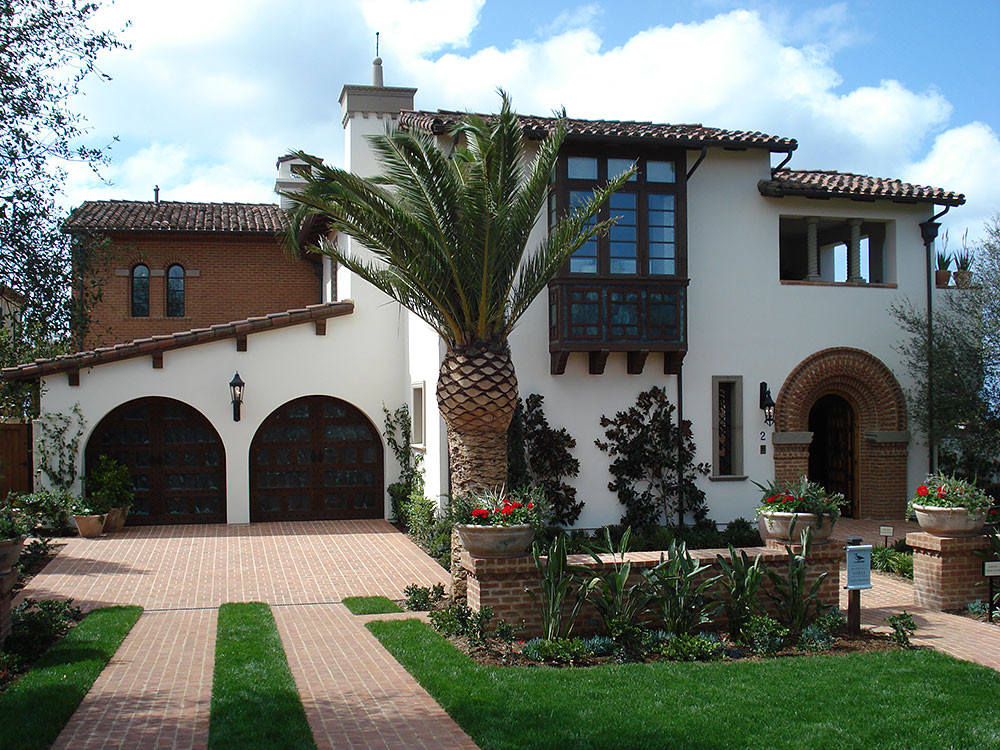Santa Barbara Stucco Finish Cracking Average ratng: 5,6/10 3583votes
What is the difference between 16/20, 20/30 and Santa Barbara Mission Finish? » The difference in these types of finishes is the aggregate size for the most part, although every type of finish can be applied a number of ways. The following are considered industry standard finish references; Fine Float, Float, Textured, Machine Applied-Dash, Smooth and Semi-Smooth. Stucco types and texture descriptions: 16/20 is the coarsest and considered the industry standard finish. Standard single application Float finish or scratch and double-same day two coat application. Textured-Skip trowel (Knock Down) is a same day two coat application with a float finish background. Machine Applied-Dash finish, is a scratch and double-two coat, allowed to dry between applications.

Exterior Painting - Stucco. Stucco is a common material used on the exterior of homes in Santa Barbara. Cracks can form in the stucco surface. Different Kinds of Stucco Finishes. Like the Santa Barbara finish, smooth finishes require a bit of work and have a tendency to crack more easily than other finishes.
20/30 is considered a high-end residential or commercial level finish. Dictionnaire Larousse Edition 2009 more. Fine Float finish, is a scratch and double-same day two coat. Skip Trowel and Free Style finishes, are same day two coat applications with trowel chatter or float finish background. Light or Extra Fine Machine Applied-Dash Finish, a scratch and double-two coat, allowed to dry between applications. Santa Barbara Mission Finish (SBMF) contains only # 30 silica sand. Smooth, Semi-Smooth, Cat Face, Mission, and Free Style Finishes, are a scratch and double-same day two coat application with trowel chatter or float finish background. What is the difference between Acrylic Finishes and Portland cement based Stucco Color Coat?
» Acrylic finishes utilize paint technology with aggregates added that can be trowel or spray applied with the appropriate equipment. Acrylic finishes can be applied over portland cement base substrates and EIF Systems using an approved grade. Stucco Color Coat is a natural cement-based material; acrylic finish is a synthetic man-made coating. Stucco cures to a hardened state while acrylics dry to a hardened state.
Acrylics dry from the outside in and can be sensitive to environmental conditions. Air circulation is as important for drying as the temperature, especially in humid conditions. Reischauer Center Summer Internship Program on this page. Cement stucco finish 'cures' as opposed to drying. Cement finish coats are a nominal 1/8 inch thick and have the ability to fill small imperfections in the base coat. Acrylic finishes have very little ability to compensate for surface irregularities. For acrylics or cement finish, the portland cement plaster base coat must be cured before applying the finish, but a longer cure time is beneficial. It gives the building additional time to 'find itself' or settle before the finish coat is applied.
Based on the type of acrylic finish and the texture of the existing surface, a skim coat of Stucco Level Coat may be required, a color matched acrylic primer may be recommended or in some cases color coordinated acrylic primer may be required. Dv288k Manual Usuario. Water Repellency: Traditional cement Stucco Color Coat, like all cement products, will absorb surface moisture and darken when wet. Acrylics will repel surface moisture, but moisture will pass through as a vapor. Acrylic finishes should never be mistakenly used as a method to 'seal' the building from water intrusion. Properly applied Portland cement plaster base coat will keep moisture out while remaining vapor permeable. It is advisable that all finish coat materials, including paint, be a 'breathable' membrane. Acrylic finish should never be used on horizontal surfaces or other areas susceptible to ponding water.